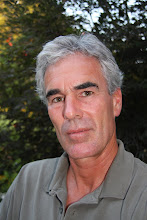Imagine finding a method to quickly heal an old injury that has nagged you for years. Maybe a back injury, or an old strain that never seemed to heal completely. Maybe it's even pain that you experience due to the repetitive nature of your job or activities. Most people accept these things as something that just has to be lived with, "perhaps it will clear up in time." When it doesn't clear up, what do you do?
Something that I have learned over time from watching what happens in the injury process is that we are all walking accumulations of old injuries. I would see this time and again in my former business, (aquatic therapy) and I see it often when I learn more about a persons' activity history. It's just a fact of the healing process of the body; often too much scar tissue is formed. In most cases inflammation and the resulting restriction of blood flow is the primary reason why excessive scar tissue if formed. Scar tissue also has a strong tendency to continue growing after the initial healing process is complete. Whichever may be the case, it acts like a spot weld and bonds tissues together, often in ways that are not desirable. (think of a successful surgery, where after six months or so, the pain returns and the patient is in the same old boat again)
Now think of each muscle in the body being surrounded by a sheath of slippery material called fascia. This material also surrounds the entire body just beneath the skin and fat. Fascia envelopes each muscle and at least ties into - if not actually forms the tendons on each end of every muscle. The idea is for the muscles to be able to move easily (fluidly) across and between each other.
When an injury occurs, the inflammation happens as a part of the healing process. The problem is of course that inflammation restricts blood flow. When this happens, the lack of blood supply lengthens the healing process. The muscle can't get as much oxygen and nutrients as it needs fast enough, and it can't clear waste very well either. This tends to create what is called "hypoxia" meaning basically that the muscle is tense, tight and actually polluted. This goes in stages varying from a fresh injury with fluid surrounded "lumpy" tissues, to the advanced stage of a muscle being leathery, tight and dysfunctional.
Scar tissue forms sometimes within the muscle itself, sometimes within the fascia surrounding the muscle where you feel the injury. Some is fine, too much is the problem. Once there is too much scar tissue, it tends to spot weld more and more tissues together, meaning less movement and more problems. Inflammation actually perpetuates the growth of this scar tissue, so that over time a situation becomes worse. Breaking up this excess scar tissue is the primary function of what I do at Well-Being Deep Tissue Therapy, Inc.
Using particular methods of tensioning the muscle as it is moved through it's range of motion is the basic idea. As the muscle is tensioned the movement is resisted, stretching the tissues that are already tight. This releases much of the "pollution" or hypoxia of the muscle, immediately allowing for better function. Scar tissue is not as flexible as healthy muscle tissue, so whether it happens immediately, or after several sessions, the excess scar tissue adhesions are broken apart. Once broken up, following the prescribed stretching program will keep the muscles moving past each other and the broken up scar tissue will be cleared away by the body as waste. Leaving only the amount necessary to take care of the original injury.
Let me give you an example of a case of a "walking accumulation of old injuries". My father is a former world class distance runner, long time world record holder for consecutive sit ups, etc. He was active outside of athletics as well; he is a WW II vet, and he has taken his share of knocks and falls, slipped on ice, broken and dislocated arms and shoulders... Now during the healing process for all of the injuries over the years he has of course experienced excess scar tissue growth. Commonly we call the inflexibility and stiffness "old age". I believe that these problems can be cleared up. The older the problem, the longer it may take, but it does clear.
Getting back to my fathers' situation, he for example had a very stiff neck. To the point of having to turn his torso in order to turn his head at all. Not uncommon I know, but when I had him lay on my table, his head could not touch the table. It hung at least an inch off of the table by the extremely tight muscles of his neck. After working with his neck for 15 minutes, his head was resting on the table as you would expect it to. After a few more sessions he had true mobility and could turn his head once again.
Massage could have helped him, and it would be good as a regular maintenance program, I would even suggest it to him or anyone. However the deep release of the scar tissue and resulting return of full function of the musculature is what provides permanent relief from problems such as this. I see massage as a natural follow-up.
The work that is performed at Well-Being Deep Tissue Therapy, Inc. will work for any soft tissue injury. It is always a pleasure to see people enjoy being able to move without restriction or pain.
In another article I will cover repetitive motion injuries and more of the specifics relating to them.
# posted by Dan Zemper @ 2:42 PM


